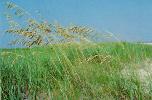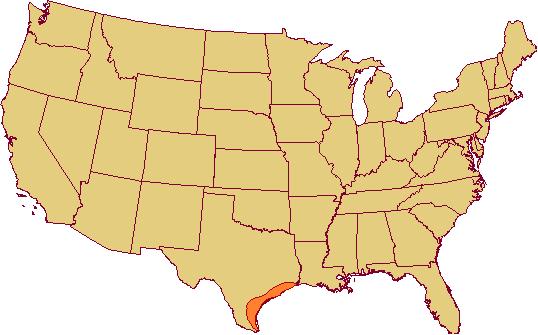
 Coastal Prairie
Coastal Prairie
This grassland was not recognized as separate from the true prairie association until studied early in this century.
Location. Coastal Prairie is located in southern Texas and across the Rio Grande in Mexico. It is bounded on the east by oak-hickory and the pine subclimax forests, (some of the dominant grasses penetrate the forest as grassy "opens" on the north by the true prairie in a broad ecotone, roughly 240 km south of the Red River. These two prairie associations have many dominants and sub-dominants in common. The northwestern margin of the coastal prairie joins the mixed prairie in a broad ecotone and on the west it also joins with the desert plains grassland in a broad ecotone which extends southward into Mexico.
Climate. The coastal prairie is the wettest of our prairie associations and, except for the desert plains grassland, is the warmest. Hence, many species occur here that are not found to the north or west. Grasses grow taller here than in cooler, drier regions.
Vegetation. The coastal prairie has a very large number of dominants, some of its own and some in common with each adjacent association. Tropical grasses also are important here (Elyonorus, Heteropogon, Trachypogon, Paspalum, and Panicum). Heavy rainfall tends to obscure the difference between mid and tall grasses. Hence, little bluestem may reach 2 meters and become, in fact, a tallgrass. The coastal prairie is richer in forbs than in True Prairie, containing most True Prairie species, and many additional ones. These shrub and shortgrass types may overlap greatly, that is, short grasses may occur under shrubs in a sort of "savanna". Coastal prairie is bordered along the Gulf of Mexico by an 8-to 16- kilometer marshy strip that is building up gulfward, and passing into coastal prairie on the shoreward side. Spartina, Sporobolus, and other wetland grasses dominate.